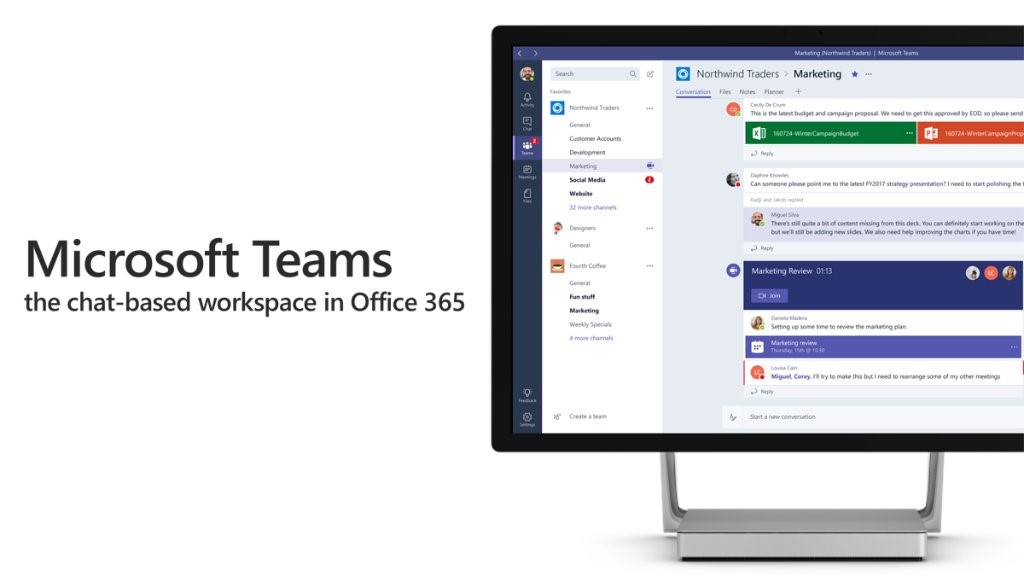

By requiring all servers to use certificates and by using OAUTH, Transport Layer Security (TLS), and Secure Real-Time Transport Protocol (SRTP), all Teams data is protected on the network. Network communications in Teams are encrypted by default. However, because product development embraced secure design principles from the start, Teams incorporates industry standard security technologies as a fundamental part of its architecture. No system can guarantee complete security. It's impossible to design against all unknown security threats. Build-time tools detect buffer overruns and other potential security threats before the code is checked in to the final product. Multiple security-related improvements were built into the coding process and practices. The first step in creating a more secure unified communications system was to design threat models and test each feature as it was designed. Teams is designed and developed in compliance with the Microsoft Trustworthy Computing Security Development Lifecycle (SDL), which is described at Microsoft Security Development Lifecycle (SDL).
#Microsoft teams online full
For full details, see the Microsoft Trust Center. Microsoft Teams, as part of the Microsoft 365 and Office 365 services, follows all the security best practices and procedures such as service-level security through defense-in-depth, customer controls within the service, security hardening, and operational best practices. Any such changes would be made with the goal of keeping Teams secure and Trustworthy by Design. For example, the default access or refresh token expiration times may be subject to modification in order to improve performance and authentication resiliency for those using Teams. The Teams service model is subject to change in order to improve customer experiences.


 0 kommentar(er)
0 kommentar(er)
